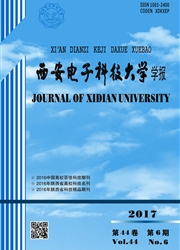

 中文摘要:
中文摘要:
针对节点随机分布的大规模无线传感器网络,提出了一种六边形集中式分簇多跳路由协议(HCCM).基站根据能耗确定簇内平均节点数,并以合适的边长确定六边形完成初步分簇;根据簇内的节点数进行分簇优化;依据节点剩余能量选择簇头及传输路径,分配合适的时隙以多跳形式完成信息的传输.仿真结果表明,与LEACH协议及其改进的协议(DE—LEACH)相比,在小规模网络中,协议HCCM延长了网络寿命,但接收的数据包数较少,性能略差;在大规模网络中,协议HCCM提高了网络性能,比改进的协议(EECT)网络寿命延长了15%,接收的数据包增加了9.5%.
 英文摘要:
英文摘要:
For random distribution of large-scale wireless sensor networks (WSNs), a hexagonal centralized cluster-based multi hop routing protocol (HCCM) is proposed. The base station divides clusters with the lowest energy consumption by choosing the length of a hexagon, and then optimizes clusters according to the number of nodes in practice. Based on the received energy information, the cluster head and multi-hop transmission path are determined with suitable slots being allotted to transmit data. Simulation results show that compared with the low energy adaptive cluster hierarchy (LEACH) and differential evolution-based routing algorithm (DELEACH), this protocol prolongs the network life with fewer packets being received in the small scale network. But in large scale networks, this protocol prolongs the network life by 15~/00 and receives 9.50/oo more packets compared with the energy-efficient clustering technique (EECT), thus improving the network performance, which verifies that this protocol is suitable for largescale WSNs.
 同期刊论文项目
同期刊论文项目
 同项目期刊论文
同项目期刊论文
 期刊信息
期刊信息
